Copy link to clipboard
Copied
Hello!
I'm looking for some help as I'm not an Illustrator pro.
I received dielines for a heart shape and a star shape. I am trying to draw into these and apply patterns and finishes, however, none of the lines are connected so these are not connected shapes.
What is the easiest way to connect these to create shapes and apply pattern?
Thank you!!
B
 1 Correct answer
1 Correct answer
Try selecting the lines and using the Live Paint Bucket to fill the area.

If the lines are too far apart with large gaps, with the Live Paint Bucket selected, you can choose Object > Live Paint > Gap Options. Turn on the Preview checkbox and choose Large Gaps or Custom. When the gap amount is adjusted, you will see red lines connecting them.
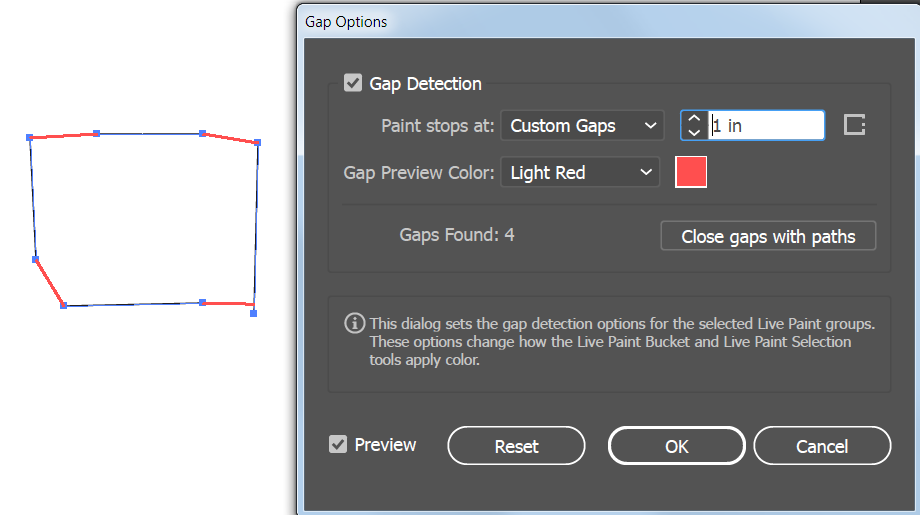
Now you can click with the Live Paint Bucket to add whichever fill you want.
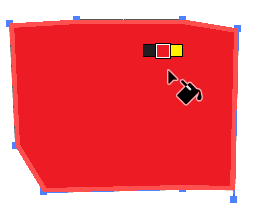
Explore related tutorials & articles
Copy link to clipboard
Copied
Select all the lines and then use the shapebuilder tool and click into them.
How to create shapes using the Shape Builder tool in Illustrator
Copy link to clipboard
Copied
Thank you, Monika!!
Can I still "Draw into it" to add pattern easily? For some reason it's still not letting me.
Thank you so much!!
Copy link to clipboard
Copied
In order to "draw into it" you would need to create a clipping mask. Create a basic clipping mask |
Copy link to clipboard
Copied
Inside Illustrator there is literally a drawing mode called Draw Inside which is accessible from the bottom of the Tools panel. Behind the scenes it is creating a clipping mask which Monika has already mentioned. You may find this a more intuitive way to draw.
Example 1
This is how Illustrator normally works. Having already drawn a square, when I draw with the Blob Brush it simply overlaps the square.
Example 2
I first drew a square and then with it still selected I switched to the Draw Inside mode. When I then drew with the Blob Brush it was restricted to the area within the square. You can also see the clipping mask that was created in the layers panel.
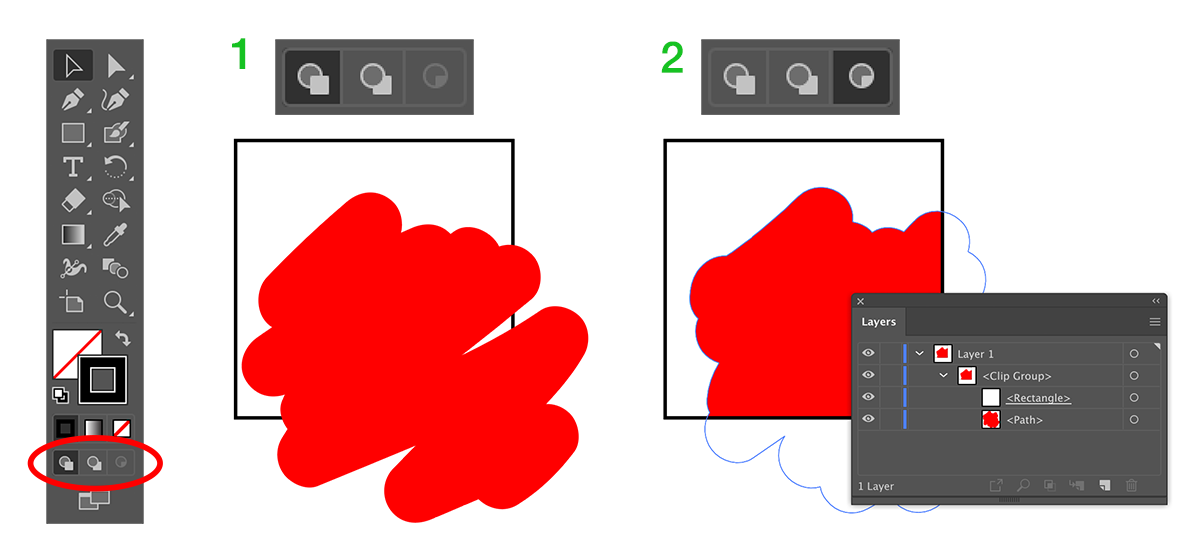
Copy link to clipboard
Copied
I am reading your post differently than the others… When I hear “dieline” I think of a knife/cut path for packaging, however this may not be your specific use case. It also sounds like you are wishing to do something like paint bucket fills or “live paint” however the shapes are not touching, so you can’t fill the discreet shapes. If this is the case, you should probably have smart guides turned on and use the direct selection tool to make the paths touch, by selecting a path anchor point and dragging the anchor point to extend it onto another path.
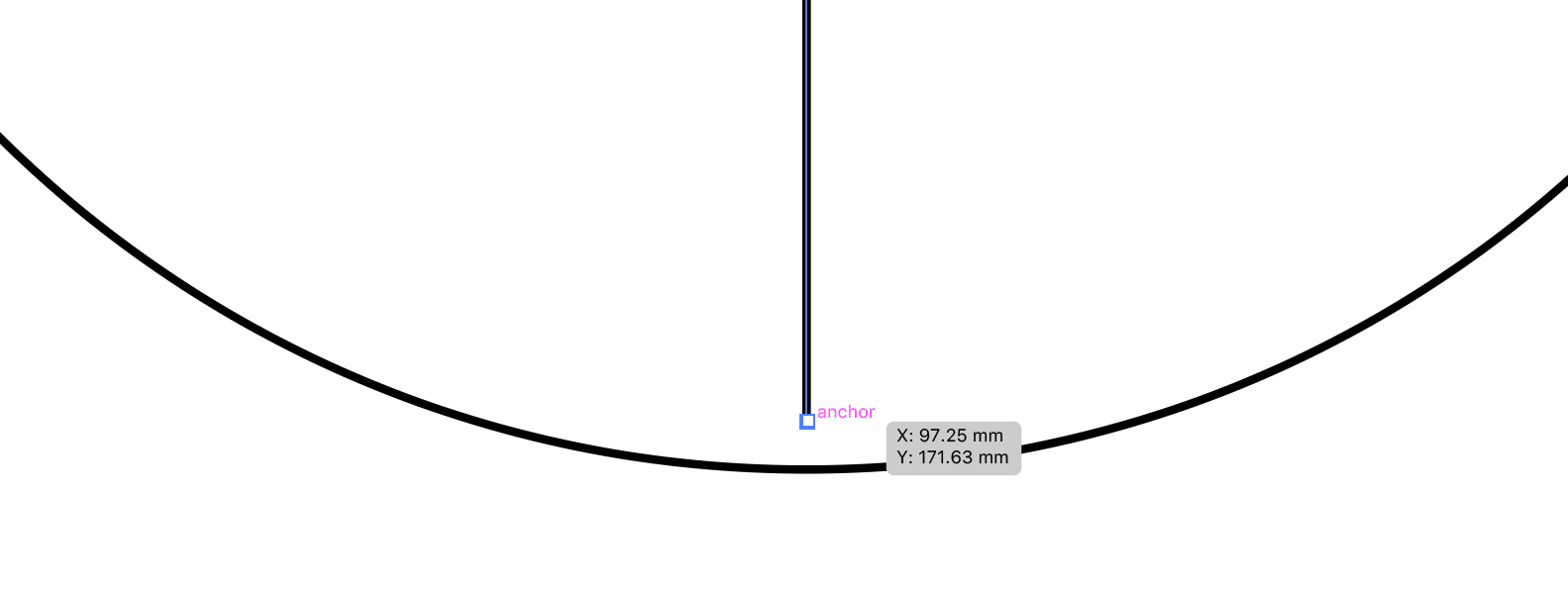
With CAD software, there may be dedicated tools such as “intersect” or “reach” that perform similar tasks, without having to select anchor points. Here is an example from Arden Impact CAD software’s reach tool:
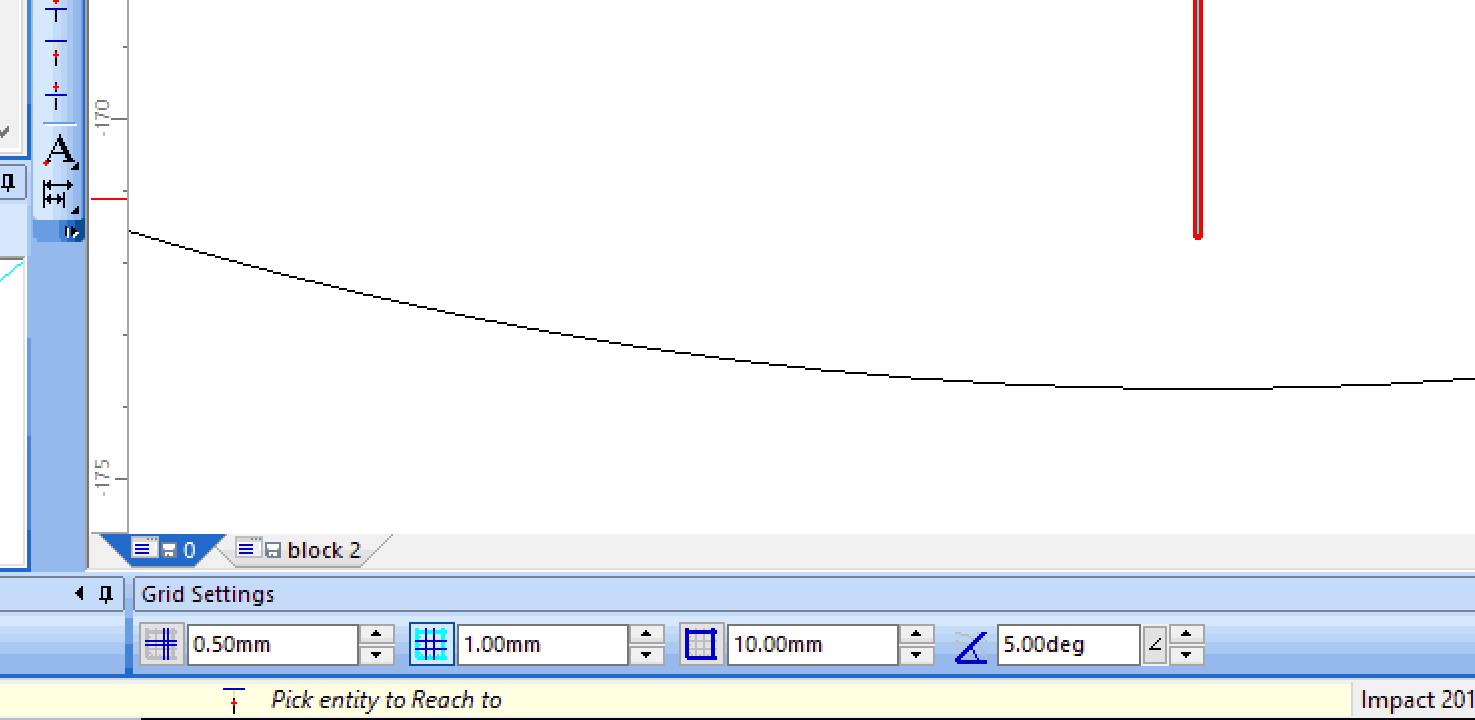
Copy link to clipboard
Copied
Try selecting the lines and using the Live Paint Bucket to fill the area.

If the lines are too far apart with large gaps, with the Live Paint Bucket selected, you can choose Object > Live Paint > Gap Options. Turn on the Preview checkbox and choose Large Gaps or Custom. When the gap amount is adjusted, you will see red lines connecting them.

Now you can click with the Live Paint Bucket to add whichever fill you want.

Copy link to clipboard
Copied
Great suggestion Barbara! I’d just like to add that if these are truly dies then the lines should probably touch… then this would still need to be corrected if you did work around the issue using live paint gap options.
Copy link to clipboard
Copied
...none of the lines are connected so these are not connected shapes.
- Black pointer: Select all the open paths which (visually) comprise what you are calling a "shape" (e.g.; all the paths that make up the "star").
- Object Menu > Path > Join (or just use the Cntrl-J keyboard shortcut). That joins the selected paths at their nearest endpoints.
What is the easiest way to connect these to create shapes and apply pattern?
Now you have a closed path, which can be filled with a Pattern Swatch.
However, you need to be careful to explain what you mean by ambiguous shop-talk terms like "dieline". A Pattern Swatch fill actually involves the functionality of a clipping path. The star-shaped closed path is acting as a mask; portions of the Pattern Swatch tiles are merely hidden in Illustrator's interface. If the file is then sent as-is to, say, a knife plotter, those merely masked portions of the paths that are stored in the Pattern Swatch tile are still there, and will be "seen" by the plotter, resulting in unwanted cuts.
So whenever designing for any kind of numerically-controlled device (plotters, cutters, routers, etc.) which are usually driven by HPGL, you need to deconstruct any and all so-called "live effects" down to their most basic constructs, so you can actually see all the paths that will be "seen" by the plotter. In Illustrator, you do that by using the appropriate Expand command(s), and then manually removing any unwanted portions of paths.
This is why especially beginners should not be advised to use instant-gratification "magic" live effect features (e.g., Live Paint) for questions about preparing files for projects involving NC devices. And beginners need to be aware that even some age-old "regular" features that are not labeled as so-called "Live Effects" in Illustrator, still are. Examples include:
Pattern Swatches. Such features are nothing new, but they are still--in effect--"live" effects, because when it comes to sending things to devices driven by other languages, "What You See" is not at all necessarily "What You Get."
Stroke weight. Even this most basic command is arguably a "live effect." On an ordinary closed path, it looks like a wide shape with two edges in the drawing program. But in terms of paths (which is all a cutting machine deals with), it is just one zero-width path.
You always have to bear in mind that programs like Illustrator were originally and still are are primarily oriented to offset lithography printing. Even when "designing for print," you have to be aware of any "printing" operations (e.g., die cutting) which are not done on an offset press.
JET
Copy link to clipboard
Copied
Hi Bree,
I would like to know if the steps suggested above worked for you, or the issue still persists.
Kindly update the discussion if you need further assistance with it.
Thanks,
Srishti
Get ready! An upgraded Adobe Community experience is coming in January.
Learn more